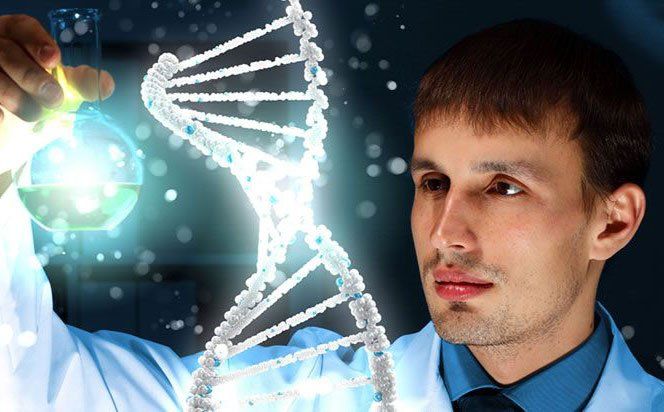MY ACCOUNT
VDR
vitamin D receptor
- Species: Human
- Expression Host: Baculovirus-insect cell
- Tag: His-tag
- Purity: 90%
- Molecular Weight: 50.1 kDa.
- Gene Accession Number: NM_000376.
Purification and Quality Control
The His-tag recombinant protein is purified by affinity chromatography in combination with FPLC columns.
The purified Vitamin D Receptor is greater than 95% homogeneous based on SDS-PAGE analysis.
Unit Definition (Activity)
1 unit equals 1 nanogram of purified protein. 1-5 units are sufficient for a gel mobility shift assay in a 20µl reaction; 50-100 units are sufficient for reconstituted transcription assay and 100-200 units are sufficient for a protein-protein interaction assay or an acetylation assay.
Applications
Recombinant VDR can be used 1) for protein-protein interaction assay; 2) for in vitro transcription assay; 3) for in vitro acetylation assay; and 4) for cell growth assay.
Formulation and Storage
The protein is in 20mM Tris-HCl pH7.9,100mM NaCl, 0.2mM EDTA, 1mM DTT and 20% glycerol. Stored at -70°C before use. Avoid repeated freeze thaw cycles.
Synonym
vitamin D (1,25- dihydroxyvitamin D3) receptor and NR1I1.
Protein Sequence
MEAMAASTSL PDPGDFDRNV PRICGVCGDR ATGFHFNAMT CEGCKGFFRR SMKRKALFTC
PFNGDCRITK DNRRHCQACR LKRCVDIGMM KEFILTDEEV QRKREMILKR KEEEALKDSL
RPKLSEEQQR IIAILLDAHH KTYDPTYSDF CQFRPPVRVN DGGGSHPSRP NSRHTPSFSG
DSSSSCSDHC ITSSDMMDSS SFSNLDLSEE DSDDPSVTLE LSQLSMLPHL ADLVSYSIQK
VIGFAKMIPG FRDLTSEDQI VLLKSSAIEV IMLRSNESFT MDDMSWTCGN QDYKYRVSDV
TKAGHSLELI EPLIKFQVGL KKLNLHEEEH VLLMAICIVS PDRPGVQDAA LIEAIQDRLS
NTLQTYIRCR HPPPGSHLLY AKMIQKLADL RSLNEEHSKQ YRCLSFQPEC SMKLTPLVLE
VFGNEIS
Background
The vitamin D endocrine system is critical for the proper development and maintenance of mineral ion homeostasis and skeletal integrity (1). Beyond these classical roles, recent evidence suggests that the bioactive metabolite of vitamin D, 1,25-dihydroxyvitamin D3, functions in diverse physiological processes, such as hair follicle cycling, blood pressure regulation, and mammary gland development (2). The biological effects of 1,25-(OH)2D3 are mediated through the vitamin D receptor (VDR), a member of the nuclear receptor superfamily of ligand-activated transcription factors (3). The cellular effects of VDR signaling include growth arrest, differentiation and/or induction of apoptosis. VDR heterodimerizes with RXR and the liganded VDR-RXR heterodimer binds with high affinity to vitamin D response elements (VDREs) in the promoters of target genes (4). In addition, several nuclear receptor coactivators (SRC-1, DRIP) have been shown to interact with VDR and potentiate its transcriptional activity (5-7). In addition to treating disorders of mineral metabolism and diseases of the skeleton, such as rickets, osteoporosis, and renal osteodystrophy, VDR and 1,25-(OH)2D3 have significant therapeutic potential for pathologies such as cancer, autoimmune syndromes, and psoriasis.
Image of SDS-PAGE /Western-blot

1. Brown AJ, et al., 1999 Am J Physiol 277
2. Sutton A.L.M., et al., 2003, Mol. Endocr. 17 (5) 777-791
3. Horst RL, Reinhardt TA 1997 In: Feldman D, Glorieux, FH, Pike JW, eds. Vitamin D. San Diego: Academic Press; 13–32
4. Haussler MR, et al., 1998 J Bone Miner Res 13:325–349
5. McKenna NJ, et al., 1999 Endocr Rev 20:321–344
6. Masuyama H, et al., 1997 Mol Endocrinol 11:1507–1517
7. Rachez C, et al., 1998 Genes Dev 12:1787–1800
DISCLAIMER
This products is recommended For RESEARCH USE ONLY and is Not qualified for Use in Diagnostic or Therapeutic Procedures.




